In Dr Scott's introduction to the island, he notes it "became notorious for heavy drinking, excessive gambling, wild nightlife and exotic bordellos." That makes a change from tunnels - off we went to explore!
It's not a very big island, just about 1km2, but it's packed full of lovely old houses, mostly built in the 1930s or earlier. Imagine being able to walk along Hong Kong's mid-levels in the 1950s. And it's really packed - I was surprised just how many buildings there are. The satellite view gives a good idea of how built-up it is.
It looks pretty much unchanged since this 1945 Map:
Cropped from this larger map of the area.
On with the buildings. The tourist map only named a few, which we dutifully visited:
British Consulate
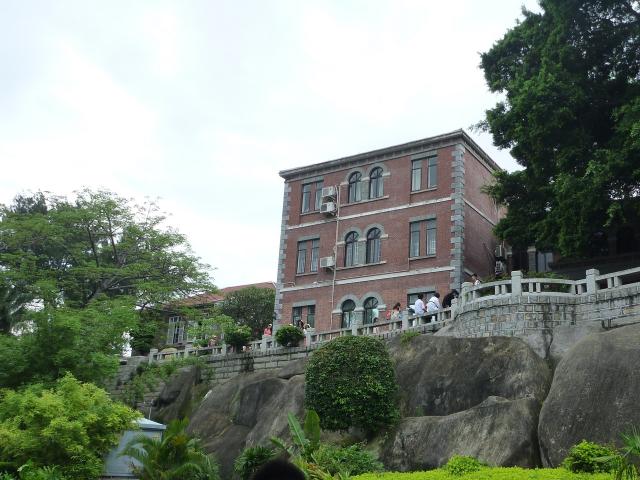
Japanese Consulate (1898)
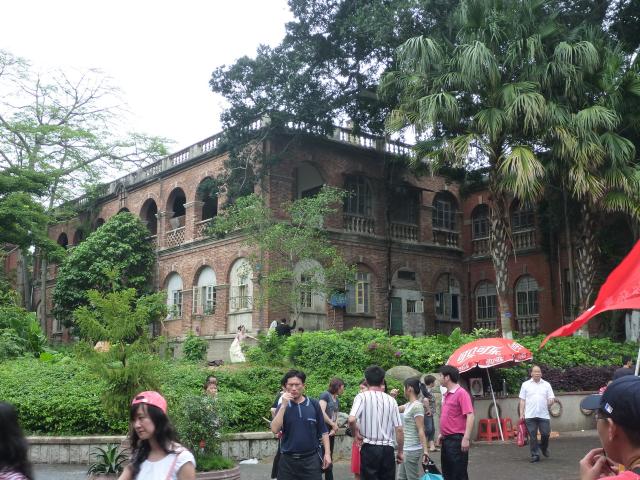
Catholic Church
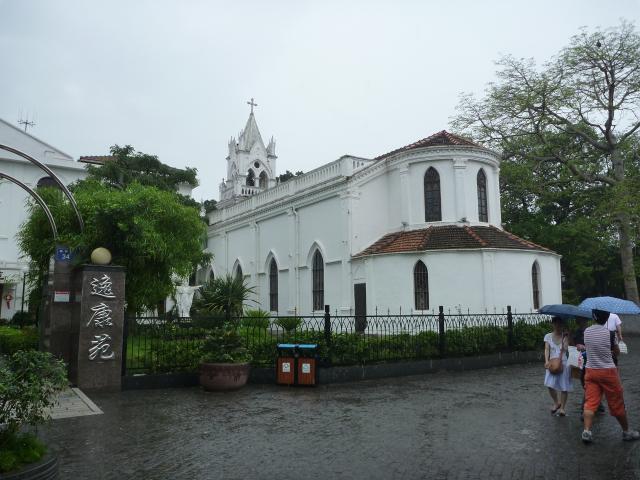
Just opposite the road is this building, which looks as though it may also have been a church. But where the Catholic church is smartly restored, the other building is falling apart.
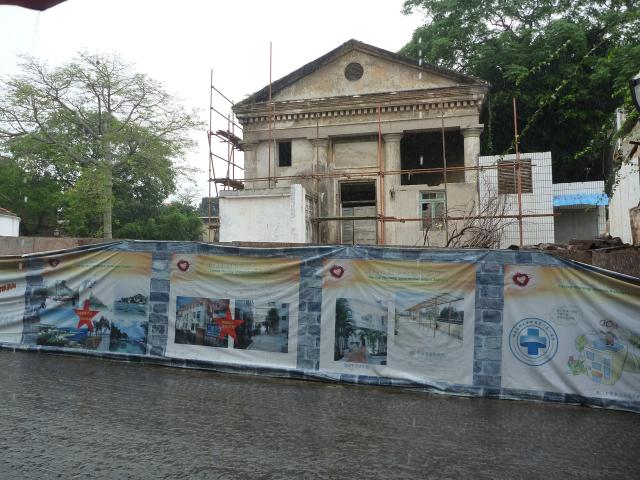
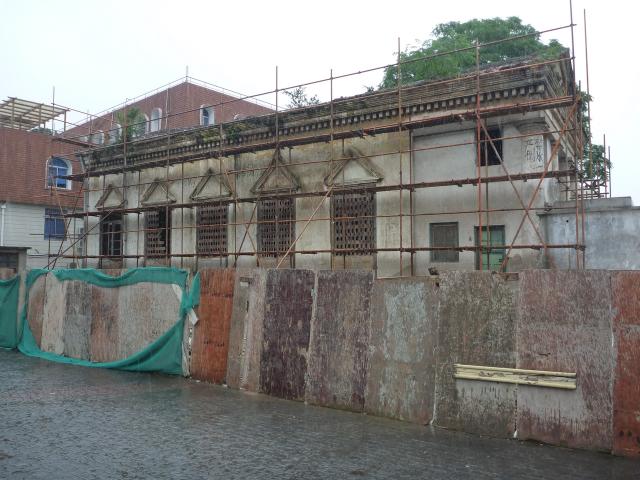
US Consulate
This was hard to see, as it's surrounded by trees. It is in good condition though, and with nice gardens and a floodlit tennis court, must have some well-connected residents.
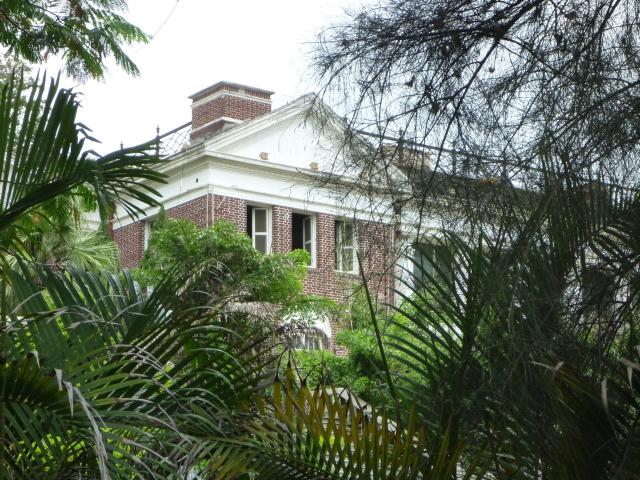
HSBC Residence (1876)
Many of the buildings we saw dated back to the 1930s. The sign on this one says 1876 though, much older than the rest.
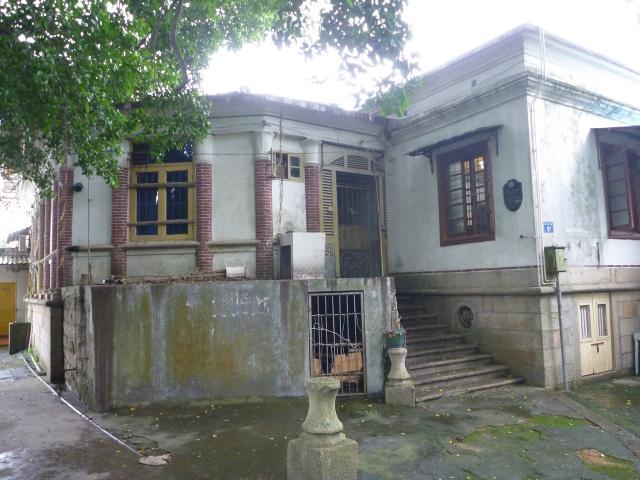
It's not clear from the photo, but it sits on top of a hill, with a sharp drop in front of it and a great view over to Amoy city. I guess the manager lived there.
It looks as though several families live there now. A lot of the buildings looked like this: roughly sub-divided into apartments, windows bricked up, pipes & cables running wherever.
Tunnels!
Ah well, no bordellos to be found, back to the tunnels.
On the map they are described as 'Caves', but they are sizeable tunnels, running under the island's hills. The hills aren't high enough to make tunnels a necessity, so I guess they were dug as shelters, and date to the cold-war era.
Here's the first we saw. We wandered in, and this time noone stopped us. It was a public right of way, and we passed several locals walking through. (Not a lot to see in the video. At 0:30 we meet some people walking the other way, which gives an idea of the size. And the video lasts over 6 minutes, the time it takes to walk through without stopping.)
Here's the second, smaller tunnel we saw.
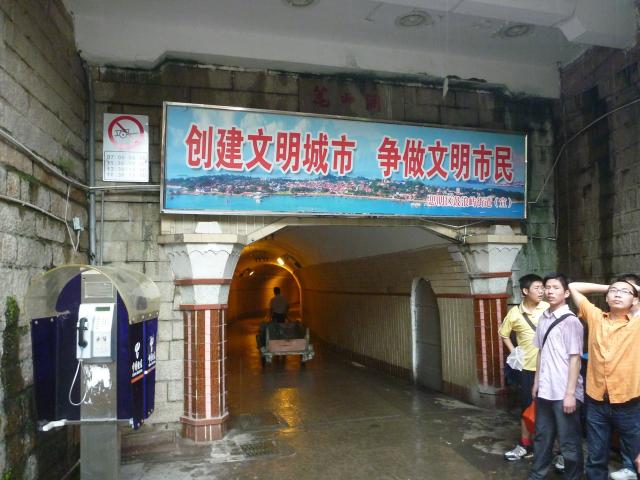
Note the 'no carts' sign top-left. There's one cart visible in the tunnel, and several more just out of view about to enter. The carts were full of old woodwork and furniture, wheeled along in the rain without any cover. I wondered where they were heading? Restoration or firewood?
Visiting
If you like old Hong Kong buildings, you'll really enjoy this place. Well worth a visit. Some points to note:
- We visited on a Saturday, and the ferries were packed with local tourists. I'll make sure to try a weekday when we go next time.
- The ferry is 8RMB return. Downstairs people were packed in like sardines. Pay an extra 1RMB to sit upstairs.
- On arriving, the area around the ferry pier and shops was most crowded. Head away from there to enjoy a more peaceful visit. eg up by the HSBC Residence it was just us and a few chickens!
More old buildings
The buildings were in one of these conditions:
- Restored - like the Consulates shown above
- Sub-divided into accommodation - like the HSBC Residence
- Crumbling - like the building opposite the Catholic Church
- Under renovation - several were being worked on.
And even for those under renovation there was a wide range. In some the basic structure looked ok, but workers were replacing windows and doors:
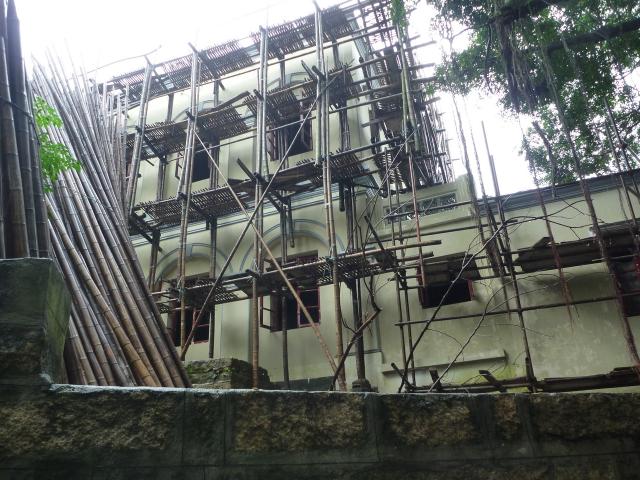
Then some like this just had the bare shell left, and need some serious work before they could be lived in again:

More photos over in the gallery.
PS If you're searching the internet for more information about the place, you've got several spellings to choose from, including: Kulangsu (seems the most common name pre-WWII), Gulangyu (the current pinyin name for the island, Ku Lang Hsu (US, 1940s), and Ko Long Soo (1850s).
Comments
Thanks for the detailed guide- just want to add that my wife and I were in Xiamen a few years ago during the summer season and found it very hot and humid. My wife particularly hated Kulangsu for being crowded and dirty everywhere (due to the continuous spitting and littering by residents / tourists). So my personal tip is to go there during the cooler season. And yes, David is right- definitely go there on a weekday.
A
Comments
This is not a map of Hong Kong.
This is a map of Gulangyu Island (鼓浪嶼) near Xiamen, China.